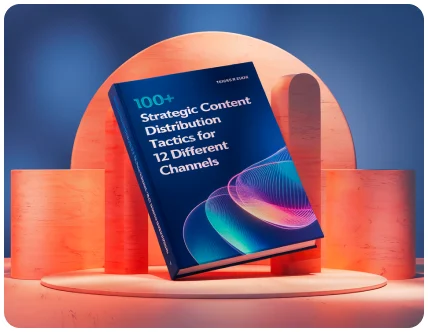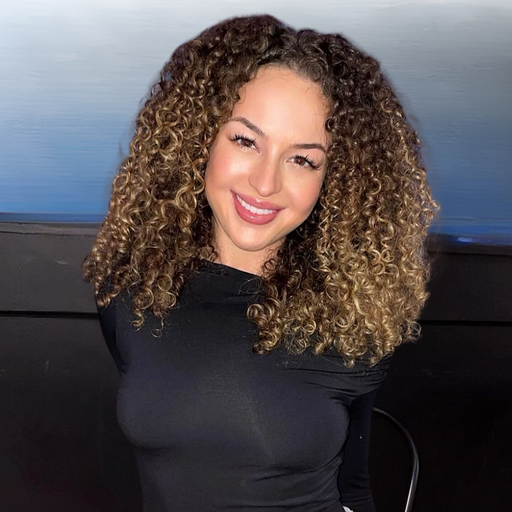The Power of Talking Head Videos in 2025: A Comprehensive Guide
Talking head videos are transforming how brands connect with audiences. Offering a direct, personal connection, these videos are perfect for conveying expertise, building trust, and driving engagement. In 2025, they’re essential for businesses looking to stand out and communicate effectively in a crowded digital landscape. Ready to master this powerful tool? Let’s dive in.

Talking head videos have become an essential tool for businesses, educators, and content creators to connect with their audience in a personal and impactful way. These videos, typically featuring a person speaking directly to the camera, are an excellent way to convey information, share expertise, or build trust with viewers. They’re commonly used for tutorials, product announcements, online courses, and even social media content. When done right, talking head videos can captivate an audience and deliver a message effectively.
Let’s explore the steps and techniques involved in creating engaging and professional talking head videos that truly resonate with your viewers.
Why Talking Head Videos Matter in 2025
Talking head videos have gained even more significance in 2025 as audiences increasingly seek authentic, relatable, and easily digestible content. With their ability to create a direct connection between the speaker and the viewer, these videos stand out as one of the most effective ways to communicate in a digital-first world. Whether you’re building a brand, delivering educational content, or simply sharing your story, talking head videos offer a dynamic platform to engage viewers and leave a lasting impression.
- Personal Connection at Scale:
- Talking head videos create a sense of intimacy and relatability, making viewers feel directly addressed. In 2025, authenticity is the currency of trust, and nothing builds authenticity like a face-to-face (virtual) interaction.
- Algorithm Favorability:
- Social platforms like YouTube, LinkedIn, and TikTok prioritize video content, particularly formats that emphasize storytelling and expertise. Talking head videos rank higher in algorithmic preferences due to their engagement potential.
- Versatility in Use Cases:
- These videos excel in various contexts, from product demonstrations and educational tutorials to thought leadership and employee training. They’re also perfect for repurposing blog content into a more engaging medium.
- Cost-Effective Production:
- While the production quality can range from basic to cinematic, the barrier to entry remains low, making talking head videos accessible to businesses of all sizes.
- High Engagement Rates:
- Viewers are more likely to engage with content where they can see a human face, leading to higher retention, shares, and conversions.
Preparation For Talking Head Video Production
The Importance of Preparation
Preparation is the foundation of any successful talking head video. It ensures that your message is clear, your delivery is confident, and your audience remains engaged throughout. Proper preparation allows you to approach the production process with a clear plan, minimizing mishaps and maximizing the impact of your content. From scripting and rehearsing to setting up the right equipment and environment, each step of preparation plays a vital role in crafting a professional and effective video.
Being prepared helps you stay focused and consistent, ensuring your key points are delivered effectively without unnecessary distractions or deviations. It also saves time during production and post-production by reducing the likelihood of reshoots or excessive editing. Above all, thorough preparation conveys professionalism and respect for your audience’s time, enhancing their trust and willingness to engage with your content.
Define Your Goals
Before you start filming, it’s crucial to identify the purpose of your video.
Are you educating your audience about a complex topic?
Selling a product or service?
Or perhaps building thought leadership in your industry?
Your goal will shape every aspect of your video, from the tone you use to the structure of your content and the call-to-action you include.
Understand Your Audience
Tailoring your message to your audience is key to creating a successful talking head video. Research your target viewers’ preferences, pain points, and communication style. Look into trends in your industry, frequently asked questions, and the platforms where your audience engages most. This information will help you craft a message that resonates with your viewers and keeps them engaged throughout the video.
The Talking Head Video Setup
Creating a professional and engaging talking head video starts with setting up the right environment and equipment.
A well-thought-out setup not only enhances the overall quality of your video but also ensures your message is delivered clearly and effectively. From lighting to sound, every element of your setup contributes to how your audience perceives your content. Investing time in optimizing your video setup can make a significant difference in capturing your viewers’ attention and maintaining their interest throughout.
Let’s dive into the essential components that make up an ideal talking head video production setup.
Studio Essentials
Lighting: Proper lighting is crucial for a professional-looking video. Use softbox lights or natural light to illuminate the subject evenly. Position yourself facing a window for the best natural lighting, or invest in affordable softbox lights for consistent illumination[2][5].
Background: Choose a clean, professional backdrop or a setting relevant to your brand. A bookshelf, office view, or even a plain wall can work well, depending on your message and brand image.
Camera: Invest in a high-quality DSLR or mirrorless camera with 4K resolution for crisp, clear footage. If you’re just starting, even a good smartphone camera can produce decent results.
Microphone: Audio quality is paramount. Use a lapel mic or shotgun mic for crisp, clear sound. Built-in camera microphones often pick up too much background noise, so an external microphone is a worthwhile investment.
Teleprompter: Consider using a teleprompter for script delivery. This tool can help you maintain eye contact with the camera while ensuring you cover all your key points.
Recording Environment
Choose a quiet space with minimal echo to ensure clear audio. If possible, use acoustic panels to reduce ambient noise and improve sound quality. A controlled environment will help you create a more professional-looking and sounding video.
Performance Techniques
Performance plays a pivotal role in the effectiveness of talking head videos. It’s not just about delivering information; it’s about how you present it. Strong performance skills help you build a connection with your audience, convey your message more persuasively, and maintain viewer engagement from start to finish. Elements like body language, facial expressions, tone of voice, and pacing contribute significantly to how your audience perceives you and your content.
Maintaining good posture and consistent eye contact with the camera creates a sense of confidence and trustworthiness, making your audience feel directly addressed. Your tone and energy should align with the video’s purpose—enthusiastic for exciting announcements, calm and measured for educational content, or empathetic for sensitive topics.
Avoid monotone delivery by varying your pitch and pace to keep your audience engaged. Additionally, practicing your delivery beforehand ensures smoother speech and fewer filler words, enhancing professionalism. Remember, the goal is to feel natural and approachable, so balance preparation with authenticity to create a memorable and impactful performance.
On-Camera Presence
Maintaining eye contact with the camera is crucial for fostering a connection with your audience. Use natural gestures and vary your tone to avoid monotony and keep viewers engaged. Remember, your energy and enthusiasm will translate through the screen, so aim to be slightly more animated than you would in a normal conversation.
Script Mastery
Write conversational scripts that sound natural when spoken aloud. Practice delivering them until they feel comfortable and authentic. Avoid sounding robotic by focusing on the meaning behind your words rather than reciting them verbatim. If you’re struggling with memorization, consider using cue cards or a teleprompter to help you stay on track without losing your natural delivery.
Dress for the Occasion
Your attire should align with your brand and complement the video’s aesthetic. Avoid clothes with busy patterns or logos that might distract viewers. Opt for solid colors that contrast well with your background and flatter your skin tone.
Editing and Post-Production
After filming, the editing process is where your talking head video truly comes to life. Use cuts, zooms, and b-roll footage to maintain visual interest throughout the video. Add graphics, text overlays, or animations to emphasize key points and break up long stretches of talking.
Consider using multiple camera angles if possible. This technique allows you to switch between perspectives, adding visual variety and helping to maintain viewer engagement.
Finally, don’t forget to add captions or subtitles to your video. This not only makes your content more accessible but also allows viewers to watch without sound, increasing your potential reach.
Creating compelling talking head videos is an art that combines technical skill with personal charisma. By following these steps and continuously refining your approach, you’ll be well on your way to producing videos that inform, engage, and inspire your audience. Remember, practice makes perfect, so don’t be discouraged if your first attempts aren’t flawless. Keep refining your technique, and soon you’ll be creating talking head videos that truly resonate with your viewers.
Outsourcing Talking Head Videos: Collaborating with Professionals
While creating talking head videos on your own can be rewarding, there are times when outsourcing the production process to professionals may be the best choice. Collaborating with experienced videographers, editors, and production teams can elevate your content, ensuring a polished and professional final product. Professionals bring technical expertise, creative insights, and the right tools to enhance the quality of your video, allowing you to focus on delivering a strong message.
When to Consider Outsourcing:
Outsourcing is particularly beneficial if you lack the necessary equipment, time, or expertise to produce high-quality videos. For businesses looking to align their videos with a specific brand image, professionals can bring in advanced equipment, such as high-end cameras, lighting setups, and audio gear, to create a visually appealing and engaging product. Additionally, professionals are adept at handling post-production tasks like color grading, sound mixing, and adding special effects, simplifying the process for you.
Balancing Costs and Quality:
Outsourcing can range from hiring freelancers for smaller projects to working with full-scale production studios for more complex needs. While costs can vary, think of it as an investment in high-impact content that resonates with your audience. Balancing what you can do in-house and what aspects to outsource allows you to maximize your budget while achieving outstanding results.
Partnering with professionals for your talking head videos can unlock new possibilities and guarantee a highly polished outcome. Whether you’re creating content to educate, inspire, or sell, outsourcing can be a strategic move to ensure your videos stand out in an increasingly competitive digital landscape.
1. Engaging Agencies
- How to Choose the Right Agency:
- Look for agencies with a strong portfolio of talking head videos.
- Assess their expertise in your industry or niche.
- Ensure they offer end-to-end services, including scripting, filming, editing, and distribution.
- Questions to Ask:
- What is your process for conceptualizing video content?
- How do you handle revisions?
- Can you provide case studies or testimonials?
- What is your turnaround time and cost structure?
2. Hiring Talent
- Casting Professionals:
- Platforms like Backstage, Fiverr, and Voices offer access to professional actors and presenters.
- What to Look for in Talent:
- Strong on-camera presence.
- Familiarity with your industry or the ability to adapt to complex topics.
- A professional demeanor and a relatable personality.
3. Outsourcing the Entire Process
- Work with full-service agencies or production companies that handle everything from ideation to execution. This ensures a seamless process and high-quality results.
Comparing Price Differences Between Options
When it comes to creating talking head videos, the cost can vary significantly depending on the approach you choose. Here’s a breakdown of the price differences between producing videos in-house, hiring freelancers, and working with full-service production agencies.
1. Producing In-House
Creating talking head videos in-house is often the most budget-friendly option, especially if you already have some basic equipment.
The costs primarily include one-time investments in essential gear like cameras, microphones, lighting equipment, and potentially a teleprompter. For a beginner setup, this can range from $500 to $2,000, while a more professional setup might cost $5,000 or more.
Additionally, there may be software costs for editing tools like Adobe Premiere Pro or Final Cut Pro, which generally range between $20 and $60 per month. While this option saves on recurring costs, it does require an investment of your time and resources to learn the necessary skills for a polished final product.
2. Hiring Freelancers
Freelancers can provide specialized services, such as videography, editing, or scripting, at a relatively affordable rate.
For example, hiring a freelance videographer may cost $50 to $150 per hour, while editing services could range from $200 to $500 per project, depending on complexity. The total cost for a complete talking head video with freelancers can vary from $500 to $2,500, depending on the skill level and the detail involved.
This option offers flexibility since you can hire freelancers for specific parts of the production process, reducing costs if you handle some tasks in-house. However, quality can vary, so choosing experienced freelancers with good reviews is crucial.
3. Full-Service Production Agencies
Working with a full-service agency is the premium option, often resulting in the highest-quality product.
However, this comes at a higher price. Production agencies manage everything, from pre-production to filming, editing, and post-production. For a professionally produced talking head video, agencies typically charge between $5,000 and $15,000 per project, though the cost can increase significantly for complex projects or longer videos. While more expensive, agencies bring technical expertise, cohesive visuals, and strategic alignment with your brand, making them ideal for businesses with larger budgets seeking highly polished results.
Price-Quality Balance
The choice between these options should align with your budget, goals, and the level of quality you want to achieve. For smaller businesses or individuals, an in-house setup or freelancers may provide a cost-effective solution.
Larger companies or brands with a focus on premium, high-impact content may find the investment in a full-service agency worthwhile. By carefully considering both the costs and the unique advantages of each option, you can choose the approach that best suits your needs.
Maximizing the Impact of Talking Head Videos
- Repurposing Content: Create multiple versions of your talking head videos by editing them into shorter clips, social media posts, or blog articles. This maximizes the reach and impact of your content while appealing to different audiences.
- Convert popular blog posts into talking head videos to reach audiences who prefer video over text.
- Slice longer videos into bite-sized clips for social media.
- Use videos in email campaigns, landing pages, and webinars.
- Distribution Strategies: Ensure your videos reach the right audience by leveraging distribution channels that align with your goals and target demographic. This could include popular platforms like YouTube, LinkedIn, or Facebook, as well as industry-specific websites or forums.
- Publish on YouTube for discoverability and repurpose using Distribution.ai
- Share natively on platforms like LinkedIn, Instagram, and TikTok to maximize reach.
- Embed videos on your website for better engagement and SEO.
- Analytics and Optimization: Analyzing your video’s performance can inform future content decisions and help you understand what resonates with your audience. Pay attention to metrics like views, watch time, audience retention, and engagement rates to refine your approach and create more impactful videos.
- Use tools like Vidyard, Wistia, or YouTube Analytics to track performance.
- Monitor metrics like watch time, click-through rates, and conversions.
- A/B test thumbnails, titles, and calls-to-action.
Wrapping Up: Talking Head Videos In The Future
Talking head videos are one of the most powerful tools for connecting with your audience, sharing complex ideas, and driving meaningful engagement. As a marketer and entrepreneur, I’ve seen firsthand how these videos can transform messaging into action. Whether you’re producing them in-house, collaborating with freelancers, or leveraging full-service agencies, success hinges on a strategic approach.
By integrating compelling storytelling, professional visuals, and smart distribution strategies, you can create videos that not only educate but inspire. I’ve worked with brands that have seen remarkable results by embracing this format—boosting audience retention, driving conversions, and building deeper trust.
As video technology rapidly evolves, those who adapt, innovate, and stay ahead of the curve will continue to dominate in a digital-first world. Are you ready to tap into the full potential of talking head videos? Stay focused, keep refining, and don’t underestimate the power of clear, authentic communication to set your brand apart. Let’s make it happen.

100+ Strategic Content Distribution Tactics For 12 Different Channels
The Distribution Playbook
Get the best in distribution advice delivered to your inbox.
Built to solve the distribution problem.Loved by marketers

It’s now possible to actually create something once and distribute it forever. I’m obsessed with this. It’s everything I needed.
”Ross Simmonds
Founder Foundation

We don’t have to spend hours writing episode descriptions any more. We can use this to craft all the copy we need to upload our podcast episodes
”A. Canta

We can now create 10 social media posts for clients in the matter of minutes. This AI is an absolute game changer.
”L. Henderson

We uploaded a blog post it created 10 social posts, we scheduled them over 3 months and the referral traffic skyrocketed.
”T. Perry